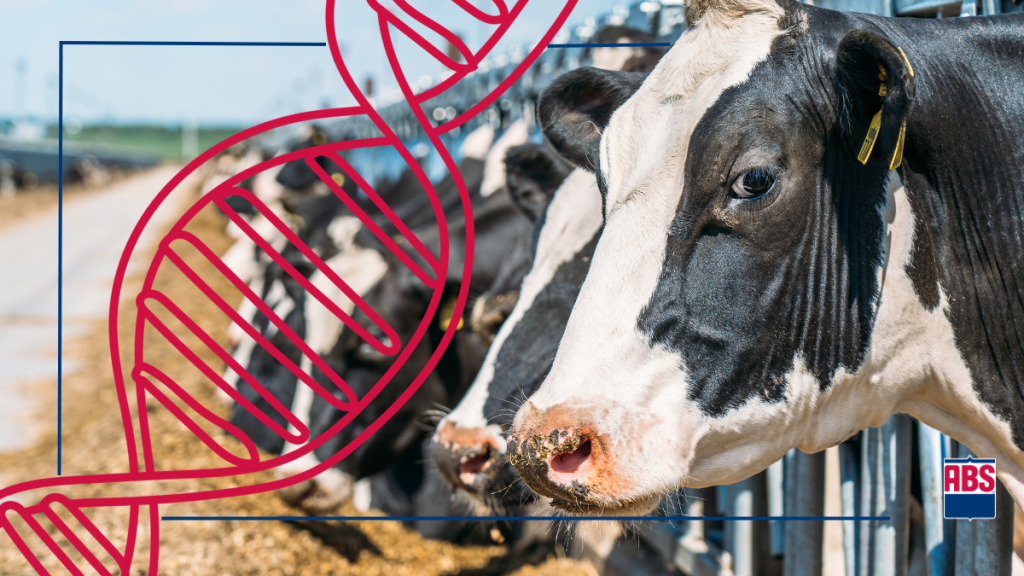Publish date: 11.28.2023
There is a ton of talk about the best genetics leading to increased profitability. While this is true, we sometimes forget that genetics are only half of the equation when it comes to phenotypic performance of an animal. You can have the best genetics for profitability in your system, but if those genetics are in a poor environment, you will not maximize the genetic potential of that animal.
Phenotypic performance or expression refers to the observable characteristics of an animal, resulting from the interaction between its genetic markup and environment. Without going too far into the genetic weeds, it is key to remember the decades-old linear equation of P=G+E that has been used as the model to describe the genetic and environmental contribution to phenotypic performance. The genes that make up an animal and the environment in which it lives are both particularly important, but what is most important is truly how they interact as they are dependent on one another.
Phenotype = Genetics + Environment
Regardless, if you are in the beef or dairy segments of the cattle industry, your profitability as a producer depends on the performance of an animal. That performance is usually determined by pounds of milk, red meat, or other by-products. Due to recent advancements in genetics, the animal agriculture industry has focused on enhancing desired traits within cattle through livestock breeding and artificial insemination. There are two crucial concepts that must be considered when aiming to enhance desired traits of an animal as we think about gene environment interaction: genetic potential and gene expression.
Let’s dive into the differences between these two concepts.
Genetic Potential: Nature’s Blueprint
Genetic potential refers to the inherent capabilities encoded in an animal’s DNA. In the context of the cattle industry, it encompasses traits such as growth rate, meat quality, disease resistance, and reproductive efficiency. You can think of genetic potential as the best possible performance an animal can achieve based solely on the gene pool it obtains and not the environment in which it lives.
Selective breeding programs focus on identifying and amplifying desirable genetic traits to enhance the overall performance of cattle herds. Through meticulous breeding, producers can isolate genes associated with specific traits, creating cattle with greater genetic potential. For example, a focus on selecting bulls with superior growth rates can lead to offspring that exhibit accelerated weight gain, ultimately increasing the efficiency of meat production. An example in the dairy industry might be that if you sold your milk based on volume, you would look for a sire whose daughters have greater milk production.
Gene Expression: The Symphony of Life
While genetic potential sets the stage, gene expression is the dynamic process that brings those genetic instructions to life. Gene expression refers to the activation of specific genes to produce proteins or functional RNA molecules. It is a fundamental life process that provides a bridge between information within a gene and the final functional gene product. Environmental factors, such as nutrition, climate, and management practices, influence gene expression and, consequently, how close an animal gets to its full genetic potential being expressed. Be aware that an animal’s environment, including management practices, affect the genetic potential of your herd because it directly impacts gene expression.
For example, in our industry, nutrition plays a pivotal role in gene expression. A well-balanced diet provides the necessary nutrients to activate genes associated with growth, reproduction, and overall health. Conversely, an inadequate or imbalanced diet can lead to suboptimal gene expression, affecting the desired traits in cattle.
The dairy and beef segments of the cattle industry truly operate in diverse environments when you look at farm to farm or ranch to ranch. That is because no two operations are the same. It is key to make sure your genetic selection is based on traits that meet your needs, rather than what the industry is telling you. When it comes to cattle breeding and environments, there is no ‘one size fits all’ approach that can be taken.
Thus, it is now more critical than ever before to find harmony in your genetic selection and management practices to maximize performance and profitability within your respective operation. Understanding the interaction amongst genes and environment as well as how you get paid in your market is the first step in boosting production performance and profits from your herd.
Discover more about maximizing the genetic potential of your herd by contacting your ABS Representative or completing the form below.






